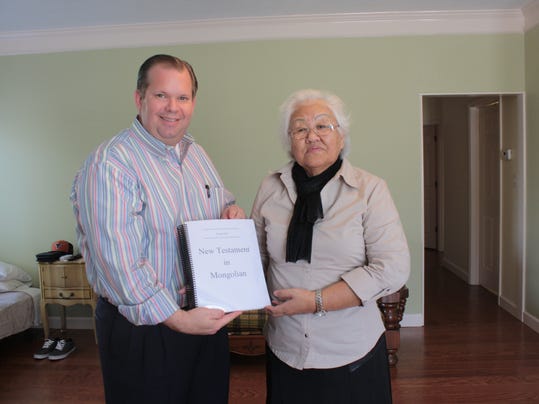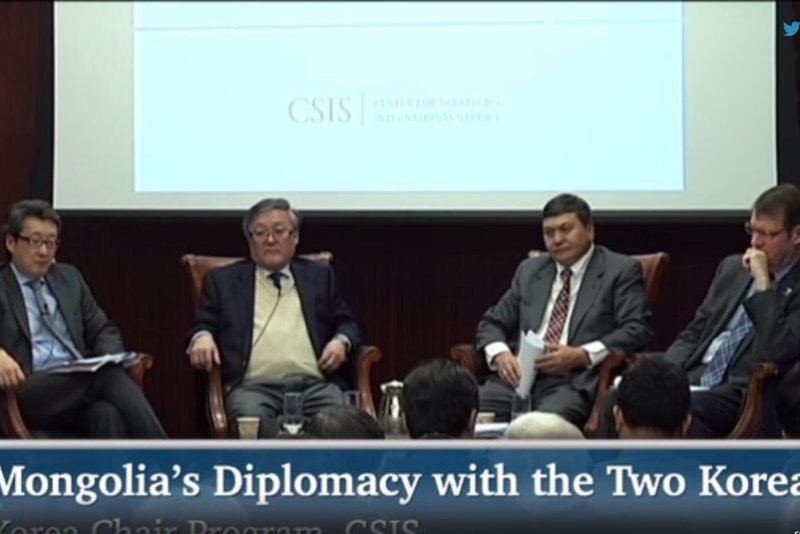| Mongolian medical professionals pose for a photo taken by a member of the Mongolian Peace Avenue Rotary Club. |
A local Rotary Club effort improved rural Mongolian birthing technology by bringing maternal and pediatric suites to five clinics in the developing country’s outskirts last month.
A year of fundraising in New Hampshire, Vermont and Maine netted about $25,000 of donations, which was matched by other Rotary funds to total more than $60,000, said Tony Gilmore, a past governor of a district covering much of New Hampshire and Vermont. The Rotarians partnered with a Massachusetts-based nonprofit called International Medical Equipment Collaborative, which refurbishes surplus equipment donated by hospitals for reuse in impoverished countries.
In the end, that partnership meant that the local funds bought birthing beds, incubators, sterilization equipment and other supplies that would have cost nearly $800,000 if purchased new.
“We shipped a 40-foot-long container full of this medical equipment broken down into five suites,” Gilmore said. “The inventory list was 66 pages long, so it was quite a lot of stuff.”
The effort was led by the Concord-based Capital City Sunrise Rotary Club, one of two clubs in the city. Gilmore said he’s one of the club’s 13 members.
Gilmore said a Mongolian man named Batuka Baterdene who’d won a Rotary scholarship was giving a presentation in the spring of 2013 to Rotarians about the lack of equipment for medical clinics in his country. Gilmore said the man brought videos that illustrated a dire need, and he decided he wanted to help.
Gilmore was busy serving as the district governor for an area covering all of central and western New Hampshire and Vermont, but he said when his term was up on July 1, he was going to make a Mongolia project his priority.
He and others then spent a year making presentations and gathering donations, and by Sept. 15 the equipment was on its way to Mongolia, where it would then be dispersed to clinics spread throughout the country’s hinterlands.
One of the clinics was more than 650 miles from the capital – where the equipment was shipped – and almost 90 percent of the way was unpaved, Gilmore said. He flew to the country to be there when the equipment arrived and see the clinics for himself.
“One of the clinics there, their sterilizer was broken. I don’t know how they sterilized their instruments,” he said, noting that their new sterilization technology could be powered by heat and could work even if the power is out.
Gilmore said nearly half the country’s population is located in the capital, and services in the rural parts of the country – oftentimes without roads – are severely lagging. According to UNICEF data, the infant mortality rate has been on the decline: It went from 31 deaths in the first year of life per 1,000 births in 2000 to 23 in 2004. But, compared with neighbors Russia and China, at 7 and 15, respectively, it’s still relatively high.
In rural areas, Mongolia’s infant mortality rate is even worse “due to long distances to health facilities as well as lack of access to antenatal and delivery care, including emergency services in rural areas,” UNICEF said. Rural areas are also much less likely to have improved water sources or sanitation provisions.
Gilmore said he worked as quickly as he could to expedite the project. He said it was “highly unusual” for the grant proposal to be fully funded, and he personally drove to IMEC headquarters with a check three days after the Rotary grant was approved in mid-July. The equipment was shipped in September and arrived in the Mongolian capital Ulaanbaatar around Thanksgiving.
Gilmore said his Capital City Sunrise Rotary Club worked closely with Mongolia’s Peace Avenue Rotary Club to work out the logistics of the project. He said the Peace Avenue club got a number of permissions from the Mongolian government to import the equipment as a donation and bypass tax requirements.
“They worked tirelessly to get this thing through customs,” he said.
A Mongolian company donated a warehouse and lifting equipment and offered a place where representatives of the five clinics could receive training on all of the new equipment. Gilmore said the Mongolian Rotarians on average were about half the age of the average American Rotarian, and the youthful group took time off work and managed to overcome a number of obstacles to deliver all of the equipment to rural destinations.
“These guys were just absolutely fantastic,” Gilmore said. “It was really, really, a terrific undertaking. I’m thrilled.”
Source:http://www.concordmonitor.com/


















